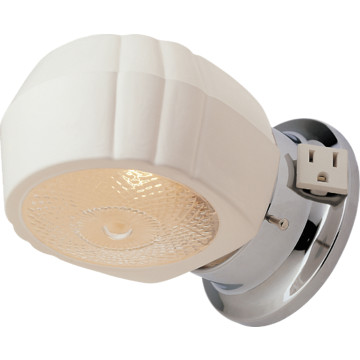Improve Energy Efficiency with GU10 LEDs
Advancements in LED technology and increased demands for energy efficiency without sacrificing brightness has led many homeowners to shift to LED GU10 lights. These lights are intensely bright and offer amazing focus and clarity of pure white light that closely replicates sunlight in the visible spectrum. While LED GU10 bulbs are inherently expensive, unlike traditional bulbs they draw very little current and never burn out, making them ideal for lights which are always on or in very difficult to change locations. LED lights are typically made out of an array of LED lights, since each individual one is limited in terms of size and power, and their light is undirected and unfocused without a reflector.
LED lights work by passing current through a tiny one-way electrical device known as a “diode.” Passing current through the semiconductor of the diode cause it to release electromagnetic waves at light, and because this works on an atomic level, it is very efficient at converting electrical energy into light energy. The first LEDs used gallium arsenide phosphide as the semiconductor in the diode, and thus gave off the typical bright-red color that most people associate with LEDs. In the 1990s scientists discovered a semiconductor which would glow bright white when installed in an LED, and this quickly led to the development of LED flashlights. Once the bulbs were sufficiently powerful, and could be installed in arrays to ensure the proper amount of brightness, LED light bulbs for home use were developed. The latest and most widely used model is LED GU10.
LED bulbs offer many advantages above traditional bulbs in addition to the fact that they use less electricity and only burn out after hundreds of thousands of hours of use. One is that they do not get hot, only mildly warm. In fact, most of the time, when someone refers to a GU10 LED WARM, they are referring to the fact that the LED emits so-called “warm” light, as is most often used for illuminating portraits or taking photographs. LEDs also range in wattage, from the GU10 LED 5W to the GU10 LED 50W in order to provide the optimal amount of light. These higher wattage assemblies tend to work by having more LEDs than their lower wattage counterparts, but even low wattage LEDs are known for being extremely bright for their size. It is therefore wise for someone upgrading to LED bulbs to see them in action before choosing them, as a GU10 60 LED may in fact be much brighter than it’s 60 watt incandescent equivalent!
LED lights work by passing current through a tiny one-way electrical device known as a “diode.” Passing current through the semiconductor of the diode cause it to release electromagnetic waves at light, and because this works on an atomic level, it is very efficient at converting electrical energy into light energy. The first LEDs used gallium arsenide phosphide as the semiconductor in the diode, and thus gave off the typical bright-red color that most people associate with LEDs. In the 1990s scientists discovered a semiconductor which would glow bright white when installed in an LED, and this quickly led to the development of LED flashlights. Once the bulbs were sufficiently powerful, and could be installed in arrays to ensure the proper amount of brightness, LED light bulbs for home use were developed. The latest and most widely used model is LED GU10.
LED bulbs offer many advantages above traditional bulbs in addition to the fact that they use less electricity and only burn out after hundreds of thousands of hours of use. One is that they do not get hot, only mildly warm. In fact, most of the time, when someone refers to a GU10 LED WARM, they are referring to the fact that the LED emits so-called “warm” light, as is most often used for illuminating portraits or taking photographs. LEDs also range in wattage, from the GU10 LED 5W to the GU10 LED 50W in order to provide the optimal amount of light. These higher wattage assemblies tend to work by having more LEDs than their lower wattage counterparts, but even low wattage LEDs are known for being extremely bright for their size. It is therefore wise for someone upgrading to LED bulbs to see them in action before choosing them, as a GU10 60 LED may in fact be much brighter than it’s 60 watt incandescent equivalent!




Comments
Post a Comment